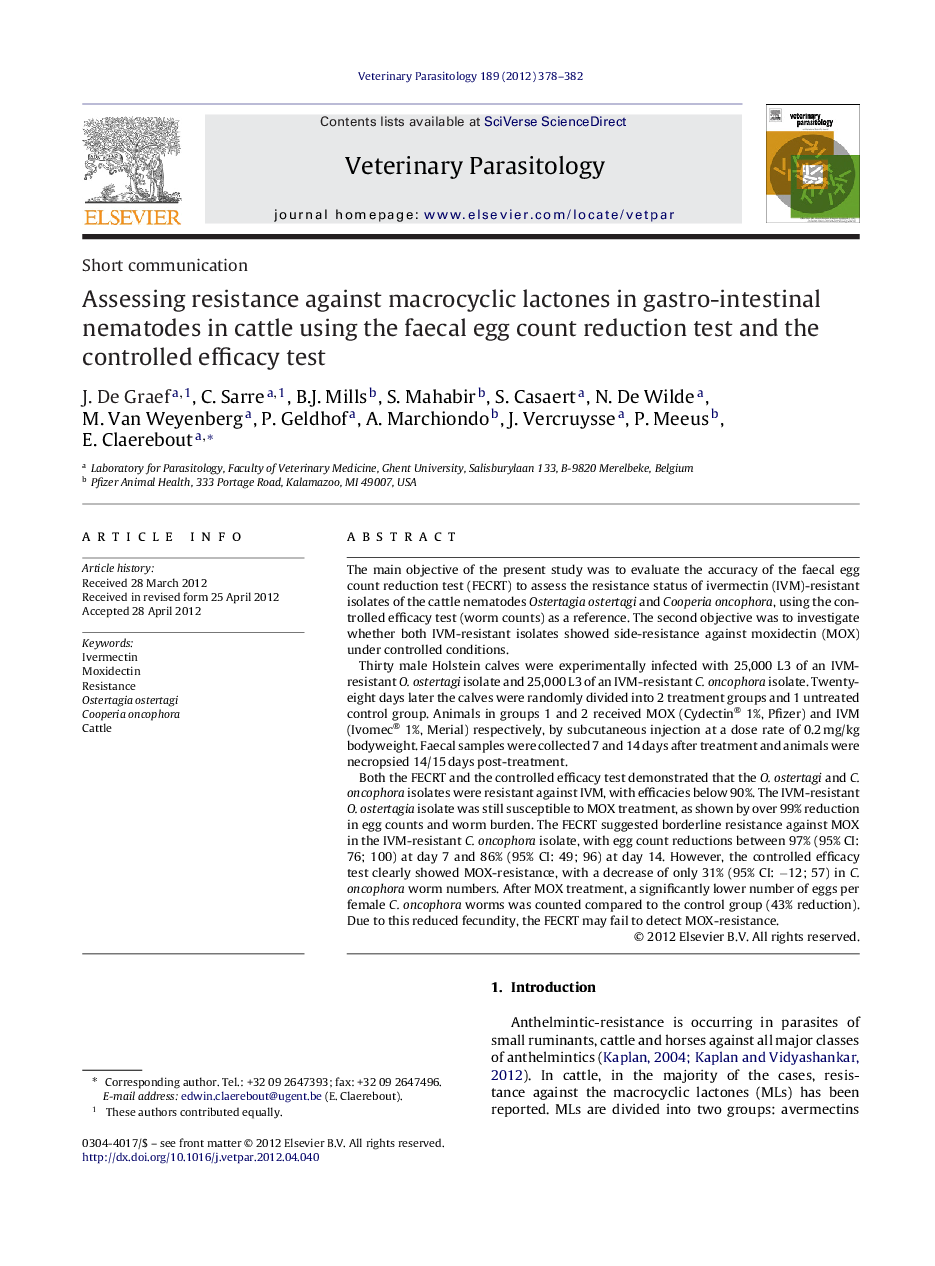| کد مقاله | کد نشریه | سال انتشار | مقاله انگلیسی | نسخه تمام متن |
|---|---|---|---|---|
| 5804874 | 1555709 | 2012 | 5 صفحه PDF | دانلود رایگان |

The main objective of the present study was to evaluate the accuracy of the faecal egg count reduction test (FECRT) to assess the resistance status of ivermectin (IVM)-resistant isolates of the cattle nematodes Ostertagia ostertagi and Cooperia oncophora, using the controlled efficacy test (worm counts) as a reference. The second objective was to investigate whether both IVM-resistant isolates showed side-resistance against moxidectin (MOX) under controlled conditions.Thirty male Holstein calves were experimentally infected with 25,000 L3 of an IVM-resistant O. ostertagi isolate and 25,000 L3 of an IVM-resistant C. oncophora isolate. Twenty-eight days later the calves were randomly divided into 2 treatment groups and 1 untreated control group. Animals in groups 1 and 2 received MOX (Cydectin® 1%, Pfizer) and IVM (Ivomec® 1%, Merial) respectively, by subcutaneous injection at a dose rate of 0.2Â mg/kg bodyweight. Faecal samples were collected 7 and 14Â days after treatment and animals were necropsied 14/15Â days post-treatment.Both the FECRT and the controlled efficacy test demonstrated that the O. ostertagi and C. oncophora isolates were resistant against IVM, with efficacies below 90%. The IVM-resistant O. ostertagia isolate was still susceptible to MOX treatment, as shown by over 99% reduction in egg counts and worm burden. The FECRT suggested borderline resistance against MOX in the IVM-resistant C. oncophora isolate, with egg count reductions between 97% (95% CI: 76; 100) at day 7 and 86% (95% CI: 49; 96) at day 14. However, the controlled efficacy test clearly showed MOX-resistance, with a decrease of only 31% (95% CI: â12; 57) in C. oncophora worm numbers. After MOX treatment, a significantly lower number of eggs per female C. oncophora worms was counted compared to the control group (43% reduction). Due to this reduced fecundity, the FECRT may fail to detect MOX-resistance.
Journal: Veterinary Parasitology - Volume 189, Issues 2â4, 26 October 2012, Pages 378-382